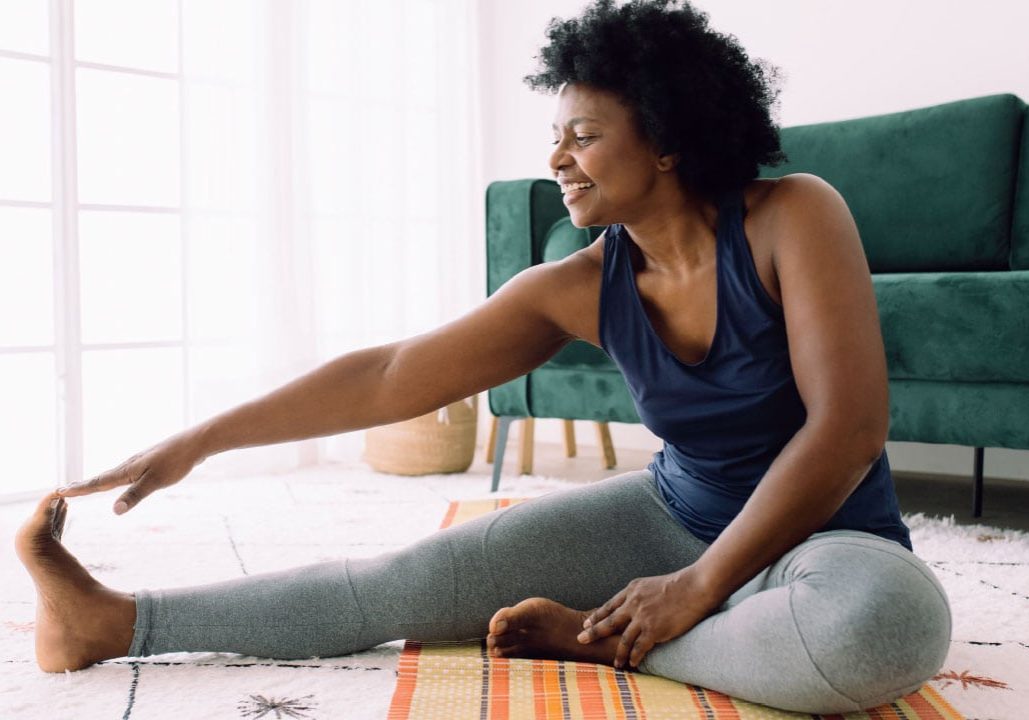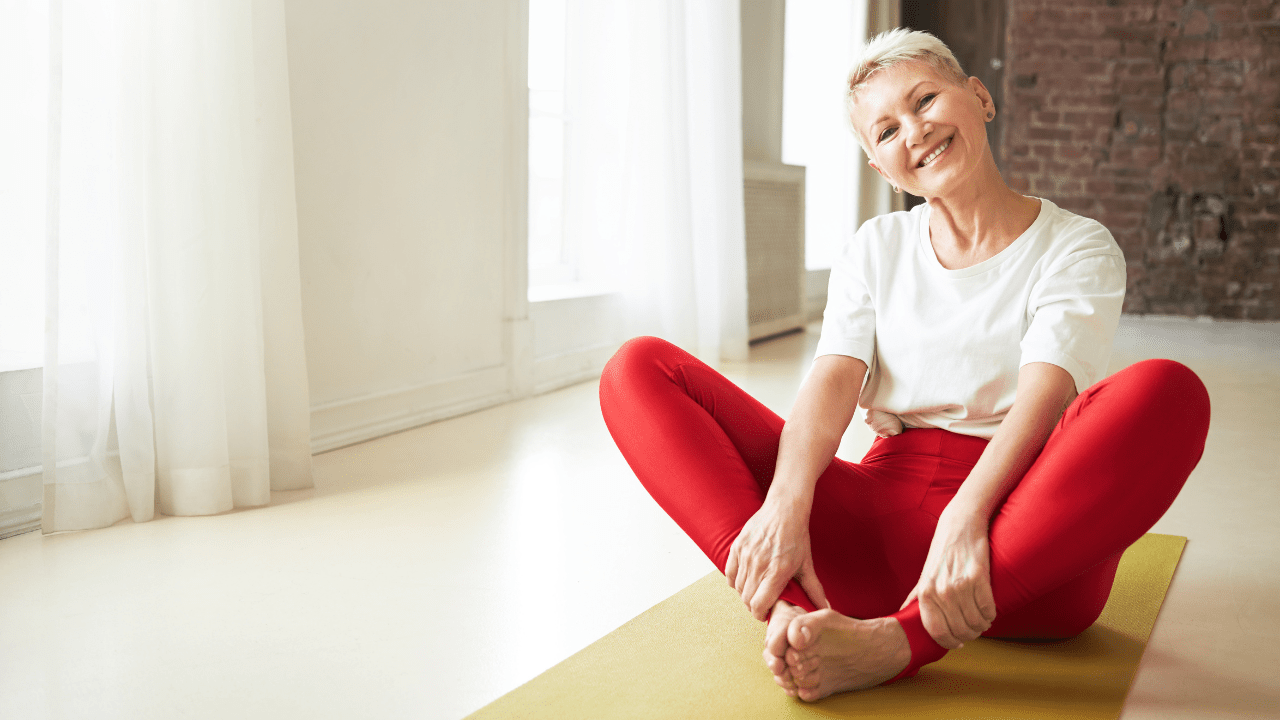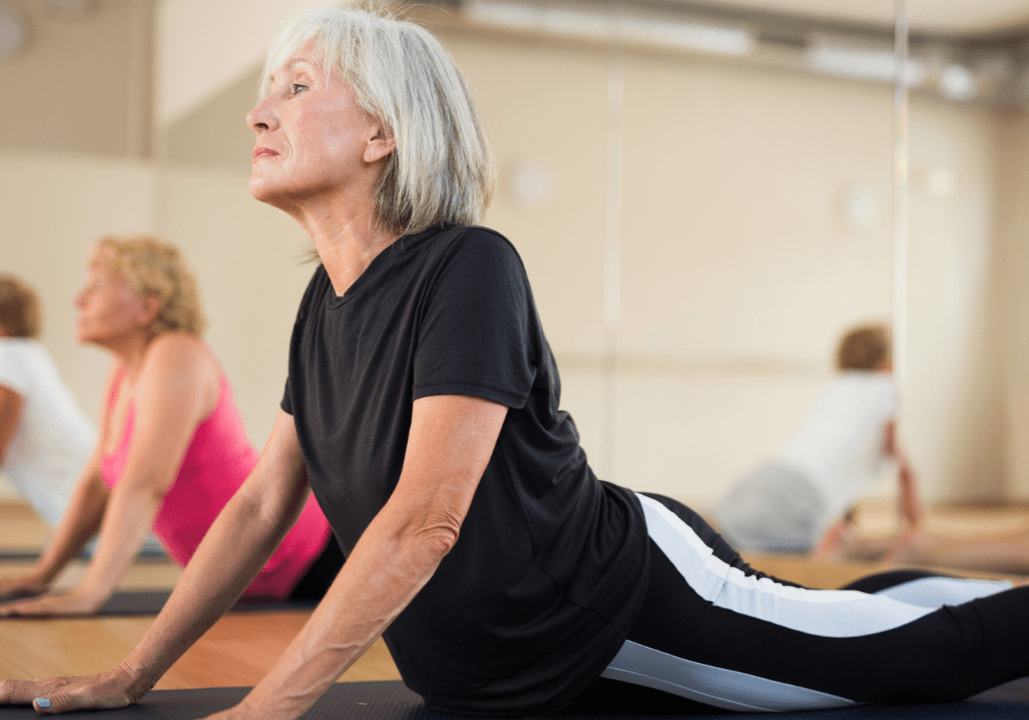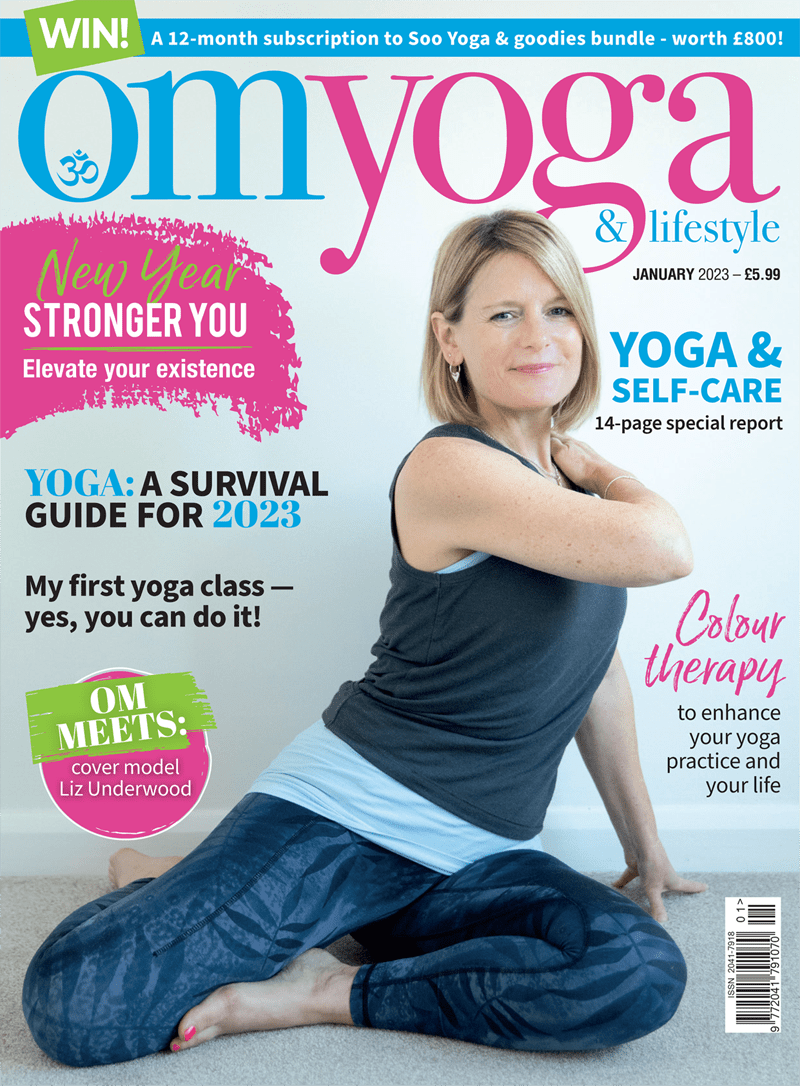
Yoga for menopause and perimenopause
How does perimenopause and menopause affect our yoga practice? By Sally Parkes
What is the perimenopause and menopause?
At present, we are hearing more and more about menopausal health in the media, which is of course helpful to spread awareness and give people more of a voice and access to helpful information and recourses regarding their concerns. The difference, however, between perimenopause and menopause does not yet appear to be common knowledge. So, let’s explore this and the symptoms that typically come with perimenopause and menopause-related hormonal changes before discussing their effect on the skeletal system.
The menopause is only one-day long and is defined as the one-year anniversary since a persons’ last menstrual period. Most women will experience a natural menopause (i.e. menopause entered naturally, not as a result of surgical or medical intervention) between the ages of 45 to 55, with the average age being 51. The time leading up to menopause is known as ‘perimenopause’ and this stage usually lasts around five to 10 years. It is during perimenopause when the physical and hormonal changes that we associate with menopause start occurring.
During the perimenopausal stage, evidence shows that oestrogen levels are high in relation to progesterone, menstrual cycle length is more variable and unpredictable, ovulation is less frequent and progesterone levels are lower.
This fluctuation of hormone levels can for some lead to the common symptoms of shorter/longer menstrual cycles, heavy/longer periods, period pain, spotting, digestive issues including bloating and constipation, headaches and migraines, increased irritability, anxiety and/or depression, hot and cold flushes, insomnia, vaginal dryness, skin/hair thinning, reduced sex drive, weight gain, bladder control issues and brain fog. These menopause symptoms can persist for up to seven years past the cessation of menstruation.
Observing ahimsa (non-violence)
Another symptom reported in a study from Berecki-Gisolf J. et al. is stiffness of the joints, which many experience as soreness, inflammation, and as a lack of mobility in the joints as a result. These symptoms can be further exacerbated when oestrogen levels start to drop in the latter stages of perimenopause and in post-menopause. It makes sense then that women from mid-life onwards may feel discouraged from regular exercise and yoga classes as some of the more traditional and general yoga classes do not always make space for such symptoms in class.
Furthermore, not adapting one’s yoga practice may actually increase soreness in the joints due to the sometimes huge range of movement that is required to access some yoga asana, in addition to the weight that yoga asana often places on vulnerable joints such as wrists and knees. We could say then that not adapting practice for the peri/menopausal body actually moves us away from ahimsa, one of yoga’s eight limbs. Which begs the question: is it still yoga if we don’t adapt the practice for mid-life yoginis?

Oestrogen and the skeletal system
According to a study by Chidi-Ogbolu N and Baar K (2019): “Beyond the known relationship between oestrogen and bone, it (oestrogen) directly affects the structure and function of the other musculoskeletal tissues such as muscle, tendon, and ligament. In these other musculoskeletal tissues, oestrogen improves muscle mass and strength, and increases the collagen content of connective tissues.”
With this in mind, we can assume that the effect of oestrogen on the body will be reversed when its levels drop. So adaptation of the practice of yoga (or any other exercise modality) to encourage the continuation of exercise is paramount to women of mid-life and post-menopause age because the drop in oestrogen production (along with progesterone and testosterone) directly affects the strength, agility and flexibility of the whole skeletal system (bones, muscles, tendons and ligaments). More specifically, these changes have been found to increase the risks of sarcoma (skeletal muscle fibre depletion) and weaken the ligaments and tendons due to a drop in collagen production, all of which can be partly slowed down with regular weight-bearing activity such yoga.
So it is clear then, that regular exercise is absolutely paramount for women in their mid-life stage and beyond, especially for those who cannot take hormone replacement therapy. But how do we adapt yoga asana whilst still gaining the benefits needed?

Adapting yoga asana
Firstly, lets modify yoga asana which place considerable weight through the wrists and shoulders. This could be downward dog, plank or side plank, all of which can be adapted by bringing the knee or knees to the ground. Or replace plank with press ups on a wall (feet on the floor, hands on the wall). Move away from postures that require deep range of movement of the knees and hip joints as they are already very prone to wear and tear from daily life. For pigeon pose for example, take deer pose instead. Or in cobbler’s pose, place blocks underneath the knees. Be mindful also of the lumbar spine too, as it is this area of the spine that is most likely to show signs of ageing first. Cobra and locust pose are helpful replacements for upward-facing dog and a gentle floor bow that keeps the upper legs on the mat is a good swap for wheel pose as it lessens the pressure in the lower back area.
Ultimately though, standing yoga asana will give the menopausal yogini the greatest benefits as these require vast amount of energy and so helps to burn off excess heat as well as boosting metabolism. Standing yoga asana also require balance which decreases likelihood of falls later on, whilst helping maintain neural pathways and muscle and joint strength which gives the skeleton more overall support, plus a healthy range of movement which helps to maintain a functional level of flexibility. Be sure to allow time for a long savasana afterwards though, so the necessary exercise toxins (cortisol, adrenaline and lactic acid) have a chance to leave the muscles via the blood stream and lymphatic system as this will help reduce inflammation.
Finding wisdom
By practicing yoga and pranayama and other holistic practices in this way, in a way that honours the female life cycle of perimenopause and menopause, and by adapting to the body and what it’s journeying thorough, as opposed to fitting the body in to the practices that no longer serves the yogini, we can keep practicing the system of yoga with great benefit whilst still honouring its deep teachings.
It is with this awareness that we can apply yoga in a way that helps us journey through menopause in the best way we can manage in the moment, with the intelligence of self-love. In this way we can bring ourselves back to a place of empowerment, a place where we can meet our new normal with acceptance and maybe even optimism at what lies ahead, a life of deep inner knowing and wisdom.
Sally Parkes BSc is a senior yoga teacher and author specialising in women’s health. She runs yoga teacher training in fertility, pregnancy, postnatal and menopause and is a teacher for @movementformodernlife Visit: sallyparkesyoga.com or connect on Instagram @sallyparkesyoga




